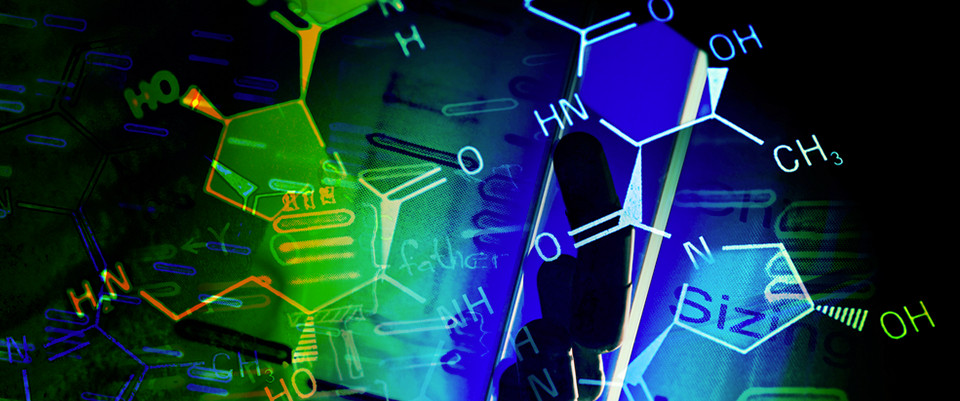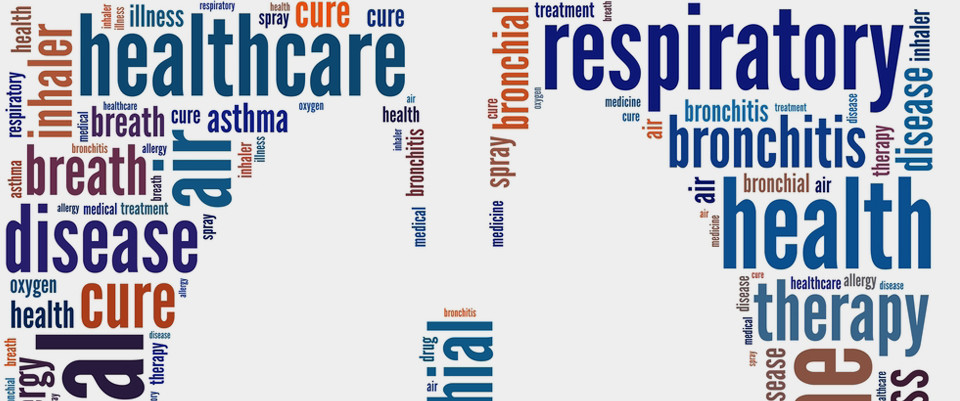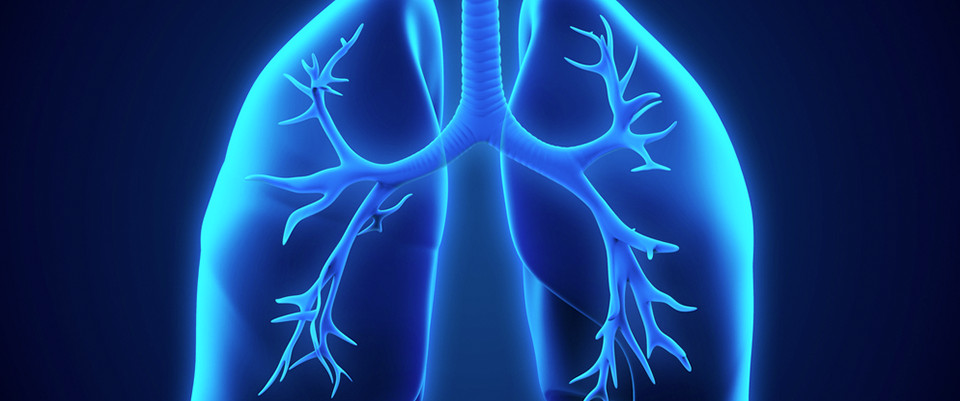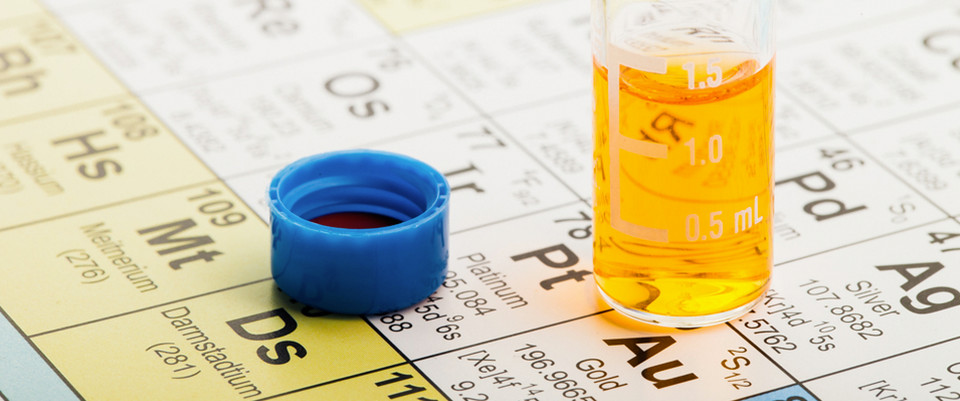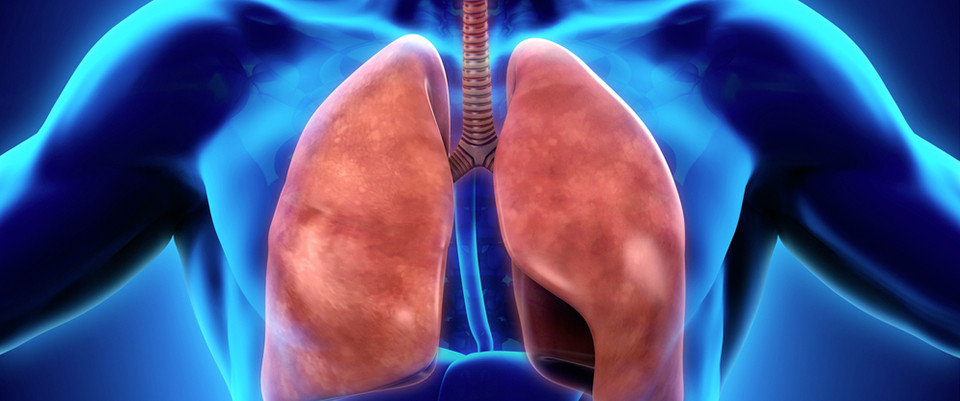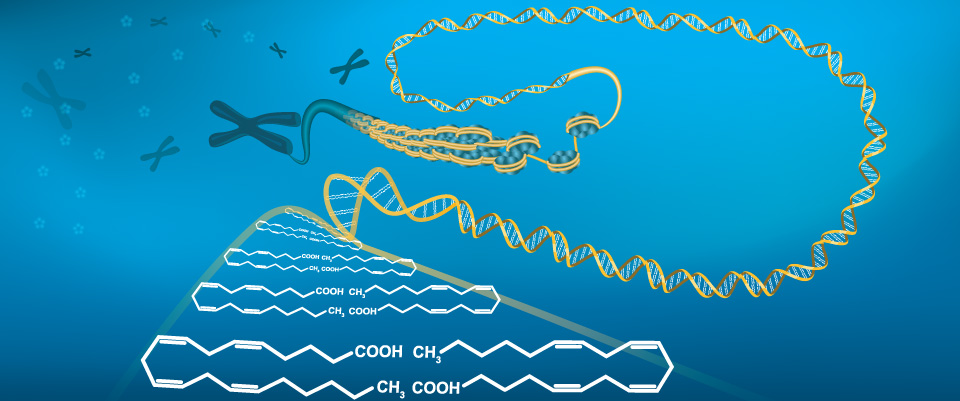PubMed
Alterations and correlations of gut microbiota, fecal, and serum metabolome characteristics in a rat model of alcohol use disorder
Front Microbiol. 2023 Jan 4;13:1068825. doi: 10.3389/fmicb.2022.1068825. eCollection 2022.ABSTRACTBACKGROUND: Growing evidence suggests the gut microbiota and metabolites in serum or fecal may play a key role in the process of alcohol use disorder (AUD). However, the correlations of gut microbiota and metabolites in both feces and serum in AUD subjects are not well understood.METHODS: We established a rat model of AUD by a chronic intermittent ethanol voluntary drinking procedure, then the AUD syndromes, the gut microbiota, metabolomic profiling in feces and serum of the rats were examined, and correlations between gut microbiota and metabolites were analyzed.RESULTS: Ethanol intake preference increased and maintained at a high level in experimental rats. Anxiety-like behaviors was observed by open field test and elevated plus maze test after ethanol withdraw, indicating that the AUD rat model was successfully developed. The full length 16S rRNA gene sequencing showed AUD significantly changed the β-diversity of gut microbial communities, and significantly decreased the microbial diversity but did not distinctly impact the microbial richness. Microbiota composition significantly changed in AUD rats, such as the abundance of Romboutsia and Turicibacter were significantly increased, whereas uncultured_bacterium_o_Mollicutes_RF39 was decreased. In addition, the untargeted metabolome analysis revealed that many metabolites in both feces and serum were altered in the AUD rats, especially involved in sphingolipid metabolism and glycerophospholipid metabolism pathways. Finally, multiple correlations among AUD behavior, gut microbiota and co-changed metabolites were identified, and the metabolites were directly correlated with the gut microbiota and alcohol preference.CONCLUSION: The altered metabolites in feces and serum are important links between the gut microbiota dysbiosis and alcohol preference in AUD rats, and the altered gut microbiota and metabolites can be potentially new targets for treating AUD.PMID:36687619 | PMC:PMC9846065 | DOI:10.3389/fmicb.2022.1068825
Metabolome and microbiome analysis revealed the effect mechanism of different feeding modes on the meat quality of Black Tibetan sheep
Front Microbiol. 2023 Jan 6;13:1076675. doi: 10.3389/fmicb.2022.1076675. eCollection 2022.ABSTRACTINTRODUCTION: Black Tibetan sheep is one of the primitive sheep breeds in China that is famous for its great eating quality and nutrient value but with little attention to the relationship between feeding regimes and rumen metabolome along with its impact on the muscle metabolism and meat quality.METHODS: This study applies metabolomics-based analyses of muscles and 16S rDNA-based sequencing of rumen fluid to examine how feeding regimes influence the composition of rumen microbiota, muscle metabolism and ultimately the quality of meat from Black Tibetan sheep. Twenty-seven rams were randomly assigned to either indoor feeding conditions (SG, n = 9), pasture grazing with indoor feeding conditions (BG, n = 9) or pasture grazing conditions (CG, n = 9) for 120 days.RESULTS: The results showed that, compared with BG and CG, SG improved the quality of Black Tibetan sheep mutton by preventing a decline in pH and increasing fat deposition to enhance the color, tenderness and water holding capacity (WHC) of the Longissimus lumborum (LL). Metabolomics and correlation analyses further indicated that the feeding regimes primarily altered amino acid, lipid and carbohydrate metabolism in muscles, thereby influencing the amino acid (AA) and fatty acid (FA) levels as well as the color, tenderness and WHC of the LL. Furthermore, SG increased the abundance of Christensenellaceae R-7 group, [Eubacterium] coprostanoligenes group, Methanobrevibacter, Ruminococcus 2 and Quinella, decreased the abundance of Lactobacillus, Prevotella 1 and Rikenellaceae RC9 gut group, and showed a tendency to decrease the abundance of Succinivibrio and Selenomonas 1. Interestingly, all of these microorganisms participated in the deposition of AAs and FAs and modified the levels of different metabolites involved in the regulation of meat quality (maltotriose, pyruvate, L-ascorbic acid, chenodeoxycholate, D-glucose 6-phosphate, glutathione, etc.).DISCUSSION: Overall, the results suggest that feeding Black Tibetan sheep indoors with composite forage diet was beneficial to improve the mouthfeel of meat, its color and its nutritional value by altering the abundance of rumen bacteria which influenced muscle metabolism.PMID:36687606 | PMC:PMC9854131 | DOI:10.3389/fmicb.2022.1076675
Editorial: Molecular insight of chronic infections
Front Microbiol. 2023 Jan 4;13:1112456. doi: 10.3389/fmicb.2022.1112456. eCollection 2022.NO ABSTRACTPMID:36687589 | PMC:PMC9846801 | DOI:10.3389/fmicb.2022.1112456
Potential therapeutic mechanism of deep brain stimulation of the nucleus accumbens in obsessive-compulsive disorder
Front Cell Neurosci. 2023 Jan 4;16:1057887. doi: 10.3389/fncel.2022.1057887. eCollection 2022.ABSTRACTDeep brain stimulation (DBS) of the nucleus accumbens (NAc) (NAc-DBS) is an effective solution to refractory obsessive-compulsive disorder (OCD). However, evidence for the neurobiological mechanisms of OCD and the effect of NAc-DBS is still lacking. One hypothesis is that the electrophysiological activities in the NAc are modulated by DBS, and another hypothesis is that the activities of neurotransmitters in the NAc are influenced by DBS. To investigate these potential alterations, rats with quinpirole (QNP)- induced OCD were treated with DBS of the core part of NAc. Then, extracellular spikes (SPK) and local field potentials (LFP) in the NAc were recorded, and the levels of relevant neurotransmitters and related proteins were measured. Analysis of SPK revealed that the firing rate was decreased and the firing pattern was changed after NAc-DBS, and analysis of LFP showed that overall power spectral density (PSD) levels were reduced after NAc-DBS. Additionally, we found that the relative powers of the theta band, alpha band and beta band were increased in OCD status, while the relative powers of the delta band and gamma band were decreased. This pathological pattern of power distribution was reformed by NAc-DBS. Furthermore, we found that the local levels of monoamines [dopamine (DA) and serotonin (5-HT)] and amino acids [glutamate (Glu) and gamma-aminobutyric acid (GABA)] in the NAc were increased in OCD status, and that the expression of the two types of DA receptors in the NAc exhibited an opposite change. These abnormalities could be reversed by NAc-DBS. These findings provide a more comprehensive understanding about the function of the NAc in the pathophysiology of OCD and provide more detailed evidence for the potential effect of NAc-DBS.PMID:36687525 | PMC:PMC9845878 | DOI:10.3389/fncel.2022.1057887
Integrative Analysis of Transcriptome and Metabolome to Illuminate the Protective Effects of Didymin against Acute Hepatic Injury
Mediators Inflamm. 2023 Jan 12;2023:6051946. doi: 10.1155/2023/6051946. eCollection 2023.ABSTRACTBased on the multiomics analysis, this study is aimed at investigating the underlying mechanism of didymin against acute liver injury (ALI). The mice were administrated with didymin for 2 weeks, followed by injection with lipopolysaccharide (LPS) plus D-galactosamine (D-Gal) to induce ALI. The pathological examination revealed that didymin significantly ameliorated LPS/D-Gal-induced hepatic damage. Also, it markedly reduced proinflammatory cytokines release by inhibiting the TLR4/NF-κB pathway activation, alleviating inflammatory injury. A transcriptome analysis proved 2680 differently expressed genes (DEGs) between the model and didymin groups and suggested that the PI3K/Akt and metabolic pathways might be the most relevant targets. Meanwhile, the metabolome analysis revealed 67 differently expressed metabolites (DEMs) between the didymin and model groups that were mainly clustered into the glycerophospholipid metabolism, which was consistent with the transcriptome study. Importantly, a comprehensive analysis of both the omics indicated a strong correlation between the DEGs and DEMs, and an in-depth study demonstrated that didymin alleviated metabolic disorder and hepatocyte injury likely by inhibiting the glycerophospholipid metabolism pathway through the regulation of PLA2G4B, LPCAT3, and CEPT1 expression. In conclusion, this study demonstrates that didymin can ameliorate LPS/D-Gal-induced ALI by inhibiting the glycerophospholipid metabolism and PI3K/Akt and TLR4/NF-κB pathways.PMID:36687218 | PMC:PMC9851790 | DOI:10.1155/2023/6051946
Environmental chemicals and endogenous metabolites in bile of USA and Norway patients with primary sclerosing cholangitis
Exposome. 2023 Jan 5;3(1):osac011. doi: 10.1093/exposome/osac011. eCollection 2023.ABSTRACTPrimary sclerosing cholangitis (PSC) is a complex bile duct disorder. Its etiology is incompletely understood, but environmental chemicals likely contribute to risk. Patients with PSC have an altered bile metabolome, which may be influenced by environmental chemicals. This novel study utilized state-of-the-art high-resolution mass spectrometry (HRMS) with bile samples to provide the first characterization of environmental chemicals and metabolomics (collectively, the exposome) in PSC patients located in the United States of America (USA) (n = 24) and Norway (n = 30). First, environmental chemical- and metabolome-wide association studies were conducted to assess geographic-based similarities and differences in the bile of PSC patients. Nine environmental chemicals (false discovery rate, FDR < 0.20) and 3143 metabolic features (FDR < 0.05) differed by site. Next, pathway analysis was performed to identify metabolomic pathways that were similarly and differentially enriched by the site. Fifteen pathways were differentially enriched (P < .05) in the categories of amino acid, glycan, carbohydrate, energy, and vitamin/cofactor metabolism. Finally, chemicals and pathways were integrated to derive exposure-effect correlation networks by site. These networks demonstrate the shared and differential chemical-metabolome associations by site and highlight important pathways that are likely relevant to PSC. The USA patients demonstrated higher environmental chemical bile content and increased associations between chemicals and metabolic pathways than those in Norway. Polychlorinated biphenyl (PCB)-118 and PCB-101 were identified as chemicals of interest for additional investigation in PSC given broad associations with metabolomic pathways in both the USA and Norway patients. Associated pathways include glycan degradation pathways, which play a key role in microbiome regulation and thus may be implicated in PSC pathophysiology.PMID:36687160 | PMC:PMC9853141 | DOI:10.1093/exposome/osac011
Supplementation with Tribulus Terrestris Extract Exhibits Protective Effects on MCAO Rats via Modulating Inflammation-Related Metabolic and Signaling Pathways
ACS Omega. 2023 Jan 5;8(2):2306-2314. doi: 10.1021/acsomega.2c06625. eCollection 2023 Jan 17.ABSTRACTThe extract of Tribulus terrestris (TT) has been used as a component of several nutritional supplements for enhancing human vitality. However, its protective effect on ischemic stroke has yet to be fully investigated. In this study, the middle cerebral artery occlusion (MCAO) rat model was established and treated with gross saponin of TT fruit (GSTTF) by gavage to explore its anti-ischemic stroke efficacy. Liquid chromatography-mass spectrometry (LC-MS)-based metabolomics was applied to profile the brain tissue metabolite changes and further obtain the metabolic pathways that were greatly involved in the efficacy of GSTTF. Subsequent molecular biology experiments were applied to validate the findings from metabolomics analysis. The results showed that GSTTF administration remarkably decreased the infarction volume of brain tissue and improved the neurobehavioral scores of MCAO rats. Metabolomics analysis revealed that pathways, including glycerophospholipid metabolism, sphingolipid metabolism, and arachidonic acid metabolism, were considered associated with the protective effect of GSTTF against MCAO, which were greatly involved in the inflammatory responses. The results of the biochemistry analysis showed that GSTTF treatment significantly reduced the levels of TNF-α and IL-6 in brain tissue after MCAO. The anti-inflammatory mechanism of GSTTF was further investigated, which revealed that GSTTF could inhibit the TLR4/MyD88/NF-κB signaling pathway to exert protective effects on MCAO. This study provides the underlying anti-inflammatory mechanism of GSTTF for ischemic stroke protection, which has important implications for the development of GSTTF-related functional foods or food supplements.PMID:36687021 | PMC:PMC9851020 | DOI:10.1021/acsomega.2c06625
When cancer drug resistance meets metabolomics (bulk, single-cell and/or spatial): Progress, potential, and perspective
Front Oncol. 2023 Jan 6;12:1054233. doi: 10.3389/fonc.2022.1054233. eCollection 2022.ABSTRACTResistance to drug treatment is a critical barrier in cancer therapy. There is an unmet need to explore cancer hallmarks that can be targeted to overcome this resistance for therapeutic gain. Over time, metabolic reprogramming has been recognised as one hallmark that can be used to prevent therapeutic resistance. With the advent of metabolomics, targeting metabolic alterations in cancer cells and host patients represents an emerging therapeutic strategy for overcoming cancer drug resistance. Driven by technological and methodological advances in mass spectrometry imaging, spatial metabolomics involves the profiling of all the metabolites (metabolomics) so that the spatial information is captured bona fide within the sample. Spatial metabolomics offers an opportunity to demonstrate the drug-resistant tumor profile with metabolic heterogeneity, and also poses a data-mining challenge to reveal meaningful insights from high-dimensional spatial information. In this review, we discuss the latest progress, with the focus on currently available bulk, single-cell and spatial metabolomics technologies and their successful applications in pre-clinical and translational studies on cancer drug resistance. We provide a summary of metabolic mechanisms underlying cancer drug resistance from different aspects; these include the Warburg effect, altered amino acid/lipid/drug metabolism, generation of drug-resistant cancer stem cells, and immunosuppressive metabolism. Furthermore, we propose solutions describing how to overcome cancer drug resistance; these include early detection during cancer initiation, monitoring of clinical drug response, novel anticancer drug and target metabolism, immunotherapy, and the emergence of spatial metabolomics. We conclude by describing the perspectives on how spatial omics approaches (integrating spatial metabolomics) could be further developed to improve the management of drug resistance in cancer patients.PMID:36686803 | PMC:PMC9854130 | DOI:10.3389/fonc.2022.1054233
Metabolic characteristics of the various incision margins for breast cancer conservation surgery
Front Oncol. 2023 Jan 4;12:959454. doi: 10.3389/fonc.2022.959454. eCollection 2022.ABSTRACTBACKGROUND: Breast cancer (BC) has recently become the most prevalent malignancy in women. There are many alternative treatments for BC, and for aesthetic and postoperative quality of life concerns, breast-conserving surgery and corresponding adjuvant therapy have become the predominant treatment for early invasive BC. Currently, the main method used to assess the margins for breast-conserving surgery is intraoperative pathological diagnosis. However, the designation of surgical margins is controversial, and metabolomics may be a novel approach to evaluate surgical margins.METHODS: We collected specimens from 10 breast cancer patients and samples from its surrounding tissues and divided them into cancerous tissue and 1 mm, 2 mm, 3 mm, 5 mm and 10 mm cutting edge tissues, with a total of 60 samples. The samples were analyzed by mass spectrometry on an ultra-performance liquid chromatography-quadrupole/Orbitrap high resolution platform. The data were then statistically analyzed to detect metabolic changes in the different cutting edges and to identify possible surgical cutting edges with statistically significant findings. Abnormal metabolic pathways were identified by Kyoto Encyclopedia of Genes and Genomes (KEGG), which elucidated potential markers.RESULTS: Statistical analysis indicated that there were substantial differences between the 1 mm margin tissue and the cancer tissue, while there were no statistically significant differences between the 1 mm tissue and tissues from the other margins. The levels of 6 metabolites in the 1 mm tissue were significantly different from those in the cancer tissue and were not significantly different from those in the 2 mm tissue. The six metabolites were pyruvate, N-acetyl-L-aspartate, glutamic acid, γ-aminobutyric acid, fumaric acid, and citric acid. Metabolic pathways such as amino acid metabolism and amino t-RNA synthesis in the margin tissue were significantly distinct from those in cancer tissues based on KEGG analysis.CONCLUSION: There was a significant difference between the 1 mm margin tissue and the cancerous tissue. Based on metabolomic analysis, the 1 mm negative margin is sufficient for surgery, and the six metabolites that we identified as abnormal, including pyruvic acid, N-acetyl-L-aspartic acid, glutamic acid, gamma-aminobutyric acid, fumaric acid and citric acid, may serve as biomarkers for a negative margin and help surgeons select an appropriate surgical margin.PMID:36686765 | PMC:PMC9846322 | DOI:10.3389/fonc.2022.959454
Wine-processed radix scutellariae alleviates ARDS by regulating tryptophan metabolism through gut microbiota
Front Pharmacol. 2023 Jan 5;13:1104280. doi: 10.3389/fphar.2022.1104280. eCollection 2022.ABSTRACTAcute respiratory distress syndrome (ARDS) is an acute and diffuse pulmonary inflammation, characterized by severe hypoxic respiratory failure caused by inflammatory tissue damage, which is a common cause of respiratory failure. Currently, there is no treatment available that can prevent or reverse the devastating effects caused by these conditions. The purpose of this study was to determine the effects of WRS on gut microbiota and the potential effect of gut microbiota on the treatment of lung disease by using a staphylococcal enterotoxin B (SEB)-induced ARDS model. The results showed that WRS could significantly reduce the pathological damage to lung and colon tissues and improve the lung and intestinal functions of ARDS mice. WRS was able to improve the level of cytokines in serum and lung tissue. Additionally, WRS could reverse the gut microbiota dysbiosis caused by SEB in ARDS mice. WRS increases the production of short-chain fatty acids (SCFAs) in the gut. This increase in SCFAs may lead to increased migration of SCFAs to the lungs and activation of free fatty acid receptors (FFAR) three and FFAR2 in lung epithelial cells, alleviating the symptoms of ARDS. Interestingly, WRS improves the faecal metabolite profiles in SEB-induced ARDS mice via tryptophan metabolism. On the basis of the component-target-metabolism strategy, baicalin, oroxylin A-7-O-glucuronide and skullcapflavon II were identified as the potential bioactive markers in WRS for the treatment of ARDS. Our study showed that WRS could ameliorate SEB-induced ARDS by regulating the structure of gut microbiota, increasing the production of SCFAs and modifying the faecal metabolite profiles through the lung-gut axis, and providing alternative treatment strategies for lung disease.PMID:36686672 | PMC:PMC9849372 | DOI:10.3389/fphar.2022.1104280
Bear bile powder ameliorates type 2 diabetes <em>via</em> modulation of metabolic profiles, gut microbiota, and metabolites
Front Pharmacol. 2023 Jan 4;13:1090955. doi: 10.3389/fphar.2022.1090955. eCollection 2022.ABSTRACTIntroduction: Bear bile powder (BBP) is widely used in the clinic and has a hypoglycemic effect, but its mechanism is not clear. Methods: In this study, type 2 diabetes mellitus (T2DM) rats induced by a high-sugar and high-fat diet combined with streptozotocin were given BBP, and biochemical indexes, pathological sections, metabonomics, intestinal microbiota (IM) and short-chain fatty acids (SCFAs) were determined. Results: The results showed that BBP could reduce blood glucose, relieve inflammation, insulin resistance, and lipid metabolism disorder, and alleviate tissue damage of the liver, spleen, kidney, and pancreas in T2DM rats. It is worth noting that BBP can reverse the changes in blood and urine metabolites in T2DM rats, which are mainly related to tryptophan metabolism, pentose and glucuronate interconversions, starch and sucrose metabolism, and glycerophospholipid metabolism. In addition, BBP restored IM disorder in T2DM rats, decreased the abundance of Allobaculum, Blautia, Dubosiella, and Anaerostipes, enriched the abundance of Lactobacillus, Romboutsia, UCG-005, and norank_f__Eggerthellaceae, and increased the concentration of SCFAs in intestinal contents. Discussion: These findings suggest that BBP may improve T2DM by regulating multiple metabolic pathways, IM composition, and SCFAs levels.PMID:36686652 | PMC:PMC9846258 | DOI:10.3389/fphar.2022.1090955
A protocol for the integration of multi-omics bioinformatics: Mechanism of acupuncture as an adjunctive therapy for alcohol use disorder
Front Neurol. 2023 Jan 5;13:977487. doi: 10.3389/fneur.2022.977487. eCollection 2022.ABSTRACTBACKGROUND: Alcohol use disorder (AUD) has become a significant global factor in various diseases. As a non-pharmacological therapy, certain therapeutic potential has been found in acupuncture; however, in-depth mechanistic studies related to acupuncture for patients with AUD are still insufficient.METHODS: Based on a randomized control design and a multi-omics analysis plan, this protocol details the recruitment (42 AUD patients), group allocation (21 in acupuncture group vs. 21 in sham acupuncture group), intervention and follow-up (replacement drugs as a normal treatment, 2 weeks acupuncture duration, and 3 month follow-up), and data collection and analytical processes. For the clinical outcomes, in addition to the time required for alcohol withdrawal symptoms to subside as the primary outcome, changes in the alcohol withdrawal symptoms, alcohol craving, mood dysfunction, sleep disorder, fatigue, self-efficacy, gastrointestinal symptoms, the quality of life, and the relapse outcomes will be compared between the groups to confirm the acupuncture clinical effectiveness on alcohol withdraw. The gut microbiome and the fecal metabolomics will also be assessed to explore the association of the structure and the function of gut microflora and the mediation of acupuncture effect on AUD fully utilizing gut microflora multi-modal data and clinical information, via the combination of multi-omics methods, feature screening algorithms and appropriate models.DISCUSSION: The results of this study may help to strengthen clinical evidence of the mechanism of acupuncture intervention in patients with AUD, through understanding of the regulatory mechanism of acupuncture in the gut microbiome and its metabolism as well as AUD-related clinical manifestations.TRIAL REGISTRATION: Chinese Clinical Trial Registry ChiCTR2200058120. Registered on 24 Mar 2022.PMID:36686540 | PMC:PMC9849375 | DOI:10.3389/fneur.2022.977487
Increased plasma genistein after bariatric surgery could promote remission of NAFLD in patients with obesity
Front Endocrinol (Lausanne). 2023 Jan 4;13:1024769. doi: 10.3389/fendo.2022.1024769. eCollection 2022.ABSTRACTBACKGROUND: Bariatric surgery is associated with a positive effect on the progress of non-alcoholic associated fatty liver disease (NAFLD). Although weight loss is the obvious mechanism, there are also weight-independent mechanisms.METHODS: We collected blood samples from 5 patients with obesity before and 3 months after surgery and performed an LC-MS-based untargeted metabolomics test to detect potential systemic changes. We also constructed sleeve gastrectomy (SG) mice models. The plasma, liver and intestine samples were collected and analyzed by qPCR, ELISA and HPLC. Cohousing experiments and feces transplantation experiments were performed on mice to study the effect of gut microbiota. Genistein administration experiments were used to study the in vivo function of the metabolites.RESULTS: Plasma genistein (GE) was identified to be elevated after surgery. Both clinical data and rodent models suggested that plasma GE is negatively related to the degree of NAFLD. We fed diet-induced obese (DIO) mice with GE, and we found that there was significant remission of NAFLD. Both in vivo and in vitro experiments showed that GE could restrict the inflammation state in the liver and thus relieve NAFLD. Finally, we used co-housing experiments to alter the gut microbiota in mice, and it was identified that sleeve gastrectomy (SG) mice had a special gut microbiota phenotype, which could result in higher plasma GE levels. By feces transplantation experiment (FMT), we found that only feces from the SG mice (and not from other lean mice) could induce higher plasma GE levels.CONCLUSION: Our studies showed that SG but not calorie restriction could induce higher plasma GE levels by altering the gut microbiota. This change could promote NAFLD remission. Our study provides new insights into the systemic effects of bariatric surgery. Bariatric surgery could affect remote organs via altered metabolites from the gut microbiota. Our study also identified that additional supplement of GE after surgery could be a therapy for NAFLD.PMID:36686492 | PMC:PMC9846086 | DOI:10.3389/fendo.2022.1024769
A new perspective on semen quality of aged male: The characteristics of metabolomics and proteomics
Front Endocrinol (Lausanne). 2023 Jan 4;13:1058250. doi: 10.3389/fendo.2022.1058250. eCollection 2022.ABSTRACTBACKGROUND: Semen quality is negatively correlated with male age and is mainly quantified by a routine semen analysis, which is descriptive and inconclusive. Sperm proteins or semen metabolites are used as the intermediate or end-products, reflecting changes in semen quality, and hold much promise as a new biomarker to predict fertility in advanced-aged males.OBJECTIVES: In this study, we sought to assess whether the semen metabolome and proteome of aged males can affect semen quality and serve as biomarkers for predicting semen quality.MATERIALS AND METHODS: We retrospectively analyzed 12825 males that underwent semen routine analysis to understand the age-dependent changes in sperm quality. To identify the difference between aged and young adults, metabolomics (n=60) analyses of semen and proteomics (n=12) analyses of sperm were conducted. Finally, integrated machine learning of metabolomics was conducted to screen biomarkers to identify aging semen.RESULTS: We discovered that male age was positively correlated with sperm concentration as well as DNA fragmentation index(DFI), and negatively with progressive motile sperm count, total sperm count, sperm volume and progressive sperm motility. The differential metabolites were significantly enriched in various metabolic pathways, and four of these differential metabolites (Pipamperone, 2,2-Bis(hydroxymethyl)-2,2',2''-nitrilotriethanol, Arg-Pro and Triethyl phosphate) were utilized to establish a biomarker panel to identify aging semen. Proteomic analysis showed that differential proteins were significantly enriched in protein digestion and absorption and some energy-related pathways. An integrated analysis of the metabolome and proteome identified differential energy metabolism and oxidative stress-related proteins, which could explain the decreased motility and the increased DFI of aging sperm.DISCUSSION AND CONCLUSION: We provide compelling evidence that the changes in semen metabolome and sperm proteome are related to the decline of semen quality in aged males. Moreover, a biomarker panel based on four metabolites was established to identify aging semen.PMID:36686470 | PMC:PMC9848653 | DOI:10.3389/fendo.2022.1058250
Metabolic remodeling of glycerophospholipids acts as a signature of dulaglutide and liraglutide treatment in recent-onset type 2 diabetes mellitus
Front Endocrinol (Lausanne). 2023 Jan 4;13:1097612. doi: 10.3389/fendo.2022.1097612. eCollection 2022.ABSTRACTAIMS: As metabolic remodeling is a pathological characteristic in type 2 diabetes (T2D), we investigate the roles of newly developed long-acting glucagon-like peptide-1 receptor agonists (GLP-1RAs) such as dulaglutide and liraglutide on metabolic remodeling in patients with recent-onset T2D.METHODS: We recruited 52 cases of T2D and 28 control cases in this study. In the patient with T2D, 39 cases received treatment with dulaglutide and 13 cases received treatment with liraglutide. Using untargeted metabolomics analysis with broad-spectrum LC-MS, we tracked serum metabolic changes of the patients from the beginning to the end of follow-up (12th week).RESULTS: We identified 198 metabolites that were differentially expressed in the patients with T2D, compared to the control group, in which 23 metabolites were significantly associated with fasting plasma glucose. Compared to pre-treatment, a total of 46 and 45 differentially regulated metabolites were identified after treatments with dulaglutide and liraglutide, respectively, in which the most differentially regulated metabolites belong to glycerophospholipids. Furthermore, a longitudinal integration analysis concurrent with diabetes case-control status revealed that metabolic pathways, such as the insulin resistance pathway and type 2 diabetes mellitus, were enriched after dulaglutide and liraglutide treatments. Proteins such as GLP-1R, GNAS, and GCG were speculated as potential targets of dulaglutide and liraglutide.CONCLUSIONS: In total, a metabolic change in lipids existed in the early stage of T2D was ameliorated after the treatments of GLP-1RAs. In addition to similar effects on improving glycemic control, remodeling of glycerophospholipid metabolism was identified as a signature of dulaglutide and liraglutide treatments.PMID:36686441 | PMC:PMC9846071 | DOI:10.3389/fendo.2022.1097612
Metabolomic analysis reveals spermatozoa and seminal plasma differences between Duroc and Liang guang Small-spotted pig
Front Vet Sci. 2023 Jan 6;9:1078928. doi: 10.3389/fvets.2022.1078928. eCollection 2022.ABSTRACTThe Liang guang Small-spotted pig is a well-known Chinese indigenous pig that is valued for its exceptional meat quality. However, the Liang guang Small-spotted pig has a lower semen storage capacity, shorter storage time and worse semen quality compared to Duroc. Pig sperm used for artificial insemination (AI) loses part of vitality and quality when being stored in commercial solutions. Serious vitality losses and short shelf life of the semen are particularly prominent in Liang guang Small-spotted pig. In this study, the metabolites in seminal plasma and spermatozoa of Duroc and Liang guang Small-spotted pigs were identified using UHPLC-Q-TOF/MS technology. The findings indicated forty distinct metabolites concentrating on energy metabolic substrates and antioxidant capacity in Liang guang Small-spotted pig and Duroc seminal plasma, including D-Fructose, succinate, 2-dehydro-3-deoxy-d-gluconate, alanine betaine, citrate, carnitine, acetylcarnitine and so on. Seventeen different metabolites were explored, with a focus on glycerophospholipid metabolism in Liang guang Small-spotted pig and Duroc spermatozoa, primarily including glycerol 3-phosphate, acetylcarnitine, phosphatidylcholine (PC) 16:0/16:0, palmitoyl sphingomyelin, acetylcholine, choline, glycerophosphocholine, betaine, L-carnitine, creatinine and others. This study reveals the metabolite profile of spermatozoa and seminal plasma among different pig breeds and might be valuable for understanding the mechanisms that lead to sperm storage capacity. Metabolites involved in energy metabolism, antioxidant capacity and glycerophospholipid metabolism might be key to the poor sperm storage capacity in Liang guang Small-spotted pig.PMID:36686181 | PMC:PMC9853278 | DOI:10.3389/fvets.2022.1078928
<em>Pueraria lobata</em> polysaccharides alleviate neonatal calf diarrhea by modulating gut microbiota and metabolites
Front Vet Sci. 2023 Jan 4;9:1024392. doi: 10.3389/fvets.2022.1024392. eCollection 2022.ABSTRACTINTRODUCTION: Neonatal calf diarrhea (NCD) is still one of the most critical diseases in calf rearing. Studies have shown that Pueraria lobata polysaccharides (PLP) have intense antioxidant and immunomodulatory activity and modulate gut microbiota. This randomized clinical trial aimed to determine the effect of PLP on the neonatal calf with diarrhea.METHODS: In this study, we recorded the fecal score of experimental calves, and calves with fecal scores ≥ 2 were determined as diarrhea and assessed their serum concentrations of inflammatory cytokines and oxidative damage-related indices. Fecal microbiota and metabolomics of diarrheal calves were further investigated.RESULTS: Results showed that treatment with PLP decreased the fecal score of diarrheal calves, serum concentrations of IL-1β, TNF-γ, and malondialdehyde, and also elevated the level of superoxide dismutase. In addition, PLP treatment altered the gut microbiota, significantly increased the relative abundances of beneficial bacteria, including the phyla Bacteroidetes and Actinobacteria, the genus Collinsella, Megamonas, and Bifidobacterium; decreased the relative abundances of pathogenetic or diarrhea related bacteria, such as Proteobacteria, Fusobacteria, Clostridium_sensu_stricto_1, and Escherichia_Shigella. Moreover, PLP can increase the fecal concentrations of isobutyric acid, propionic acid, and pantothenate; lower the levels of PC [18:0/18:1(9Z)], arachidonic acid, and docosahexaenoic acid.DISCUSSION: Thus, the results suggested that the PLP may perform the therapeutic activity via alleviating intestinal inflammation and regulating gut microbiota, avoiding further dysbiosis to restore the metabolism of gut microbiota, and finally promoting the recovery of diarrhea. The change further mitigated intestinal inflammation and oxidative damage in diarrheal calves. This indicated that PLP might be a promising treatment to attenuate diarrhea in neonatal calves.PMID:36686167 | PMC:PMC9845628 | DOI:10.3389/fvets.2022.1024392
Untargeted metabolomics reveals the effect of rearing systems on bone quality parameters in chickens
Front Genet. 2023 Jan 4;13:1071562. doi: 10.3389/fgene.2022.1071562. eCollection 2022.ABSTRACTThe objective of this study was to investigate the effects of rearing systems on the bone quality parameters in chickens using a metabolomics strategy. A total of 419 male one-day-old chicks were randomly allocated to two groups, a floor rearing group (FRG, n = 173) and a cage rearing group (CRG, n = 246). At 6, 8, 10, and 12 weeks of age, all chickens were radiographed by a digital X-ray machine, and body weight was recorded. At 12 weeks of age, 12 birds were selected from each group to obtain tibia and femur, and bone quality parameters of bone mineral density (BMD), mineral content (BMC), breaking strength (BBS), stiffness, Young's modulus (YM), ash content, calcium content, and phosphorus content were determined. An untargeted metabolomics assay was performed to identify changes in the serum metabolic profile (n = 8 birds/group). The results showed that cage-reared chickens had wider tibiae and greater body weight compared with floor-reared chickens. There were no significant differences in BMC or BBS between the two groups (p > 0.05), but BMD, ash content, calcium content, and phosphorus content of the tibia and femur of FRG were significantly higher than those of CRG (p < 0.05). Greater stiffness and YM of the femur were also observed in birds raised in the FRG compared with those raised in the CRG (p < 0.05). Taken together, the results suggest that rearing systems affected bone quality parameters. Furthermore, 148 and 149 differential metabolites were identified in positive and negative ion modes by LC-MS/MS analysis, among which 257 metabolites were significantly correlated with 16 bone quality parameters, including leucine, myristoleic acid, glycocholic acid, and N-phenylacetamide. KEGG analysis indicated that 15 metabolic pathways, including six pathways of amino acid metabolism, two pathways of lipid metabolism, and two pathways of carbohydrate metabolism, were responsible for bone quality. Overall, the present study demonstrated the effect of rearing systems on bone quality parameters, and identified several metabolites and metabolic pathways associated with bone quality parameters.PMID:36685899 | PMC:PMC9846032 | DOI:10.3389/fgene.2022.1071562
Metabolite profiling and transcriptome analyses provide insight into the regulatory network of graft incompatibility in litchi
Front Genet. 2023 Jan 5;13:1059333. doi: 10.3389/fgene.2022.1059333. eCollection 2022.ABSTRACTLitchi is an important commercial fruit crop widely grown in the world. Graft incompatibility between rootstocks and scions is a major constraint for large-scale cultivation of litchi orchards, popularization of new and excellent litchi varieties, and associated industrial development. Further, the genetic mechanism of graft incompatibility is still unclear in litchi. To reduce the incompatibility problems, this study investigated metabolic and transcriptomic differences between graft compatible and incompatible rootstock-scion combinations of litchi. The result of metabolomics analysis showed that incompatible rootstock-scion interaction modified the profiles of several metabolic substances. However, various compounds of flavonoids, phenolic acids, and lignin predominantly exhibited significantly altered abundance in graft incompatible combinations. Transcriptome analysis identified that graft incompatibility induces dynamic gene differences. The majority of these differentially expressed genes were enriched in biosynthetic pathways of phenylpropanoids. The differential expressions of genes in these pathways could be linked to the differential abundance levels of flavonoids, phenolic acids, and lignin compounds. Integrated metabolomic and transcriptomic analyses revealed a strong relationship between differential genes and differential metabolites identified in this study. In addition, identified hub genes and metabolites were closely associated with graft incompatibility of litchi. This study characterized the abundance of metabolites and genes in graft incompatible combinations and further discussed the genetic mechanism of graft incompatibility in litchi. Our results provide a platform to dissect the molecular mechanisms of graft incompatibility in the litchi fruit.PMID:36685870 | PMC:PMC9849251 | DOI:10.3389/fgene.2022.1059333
The altered metabolites contributed by dysbiosis of gut microbiota are associated with microbial translocation and immune activation during HIV infection
Front Immunol. 2023 Jan 4;13:1020822. doi: 10.3389/fimmu.2022.1020822. eCollection 2022.ABSTRACTBACKGROUND: The immune activation caused by microbial translocation has been considered to be a major driver of HIV infection progression. The dysbiosis of gut microbiota has been demonstrated in HIV infection, but the interplay between gut microbiota and its metabolites in the pathogenesis of HIV is seldom reported.METHODS: We conducted a case-controlled study including 41 AIDS patients, 39 pre-AIDS patients and 34 healthy controls. Both AIDS group and pre-AIDS group were divided according to clinical manifestations and CD4 + T cell count. We collected stool samples for 16S rDNA sequencing and untargeted metabolomics analysis, and examined immune activation and microbial translocation for blood samples.RESULTS: The pre-AIDS and AIDS groups had higher levels of microbial translocation and immune activation. There were significant differences in gut microbiota and metabolites at different stages of HIV infection. Higher abundances of pathogenic bacteria or opportunistic pathogen, as well as lower abundances of butyrate-producing bacteria and bacteria with anti-inflammatory potential were associated with HIV severity. The metabolism of tryptophan was disordered after HIV infection. Lower level of anti-inflammatory metabolites and phosphonoacetate, and higher level of phenylethylamine and polyamines were observed in HIV infection. And microbial metabolic pathways related to altered metabolites differed. Moreover, disrupted metabolites contributed by altered microbiota were found to be correlated to microbial translocation and immune activation.CONCLUSIONS: Metabolites caused by dysbiosis of gut microbiota and related metabolic function are correlated to immune activation and microbial translocation, suggesting that the effect of microbiota on metabolites is related to intestinal barrier disruption in HIV infection.PMID:36685491 | PMC:PMC9845923 | DOI:10.3389/fimmu.2022.1020822

